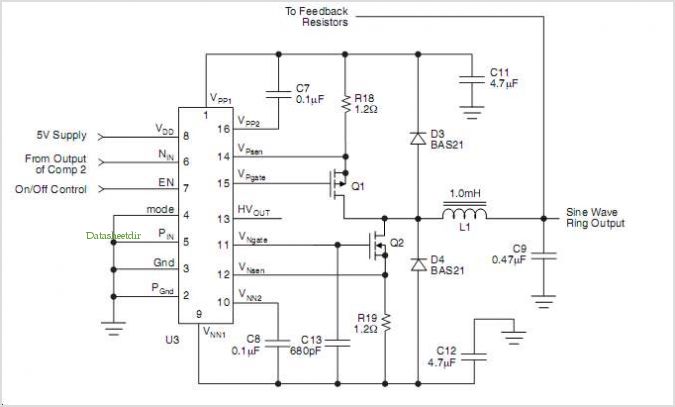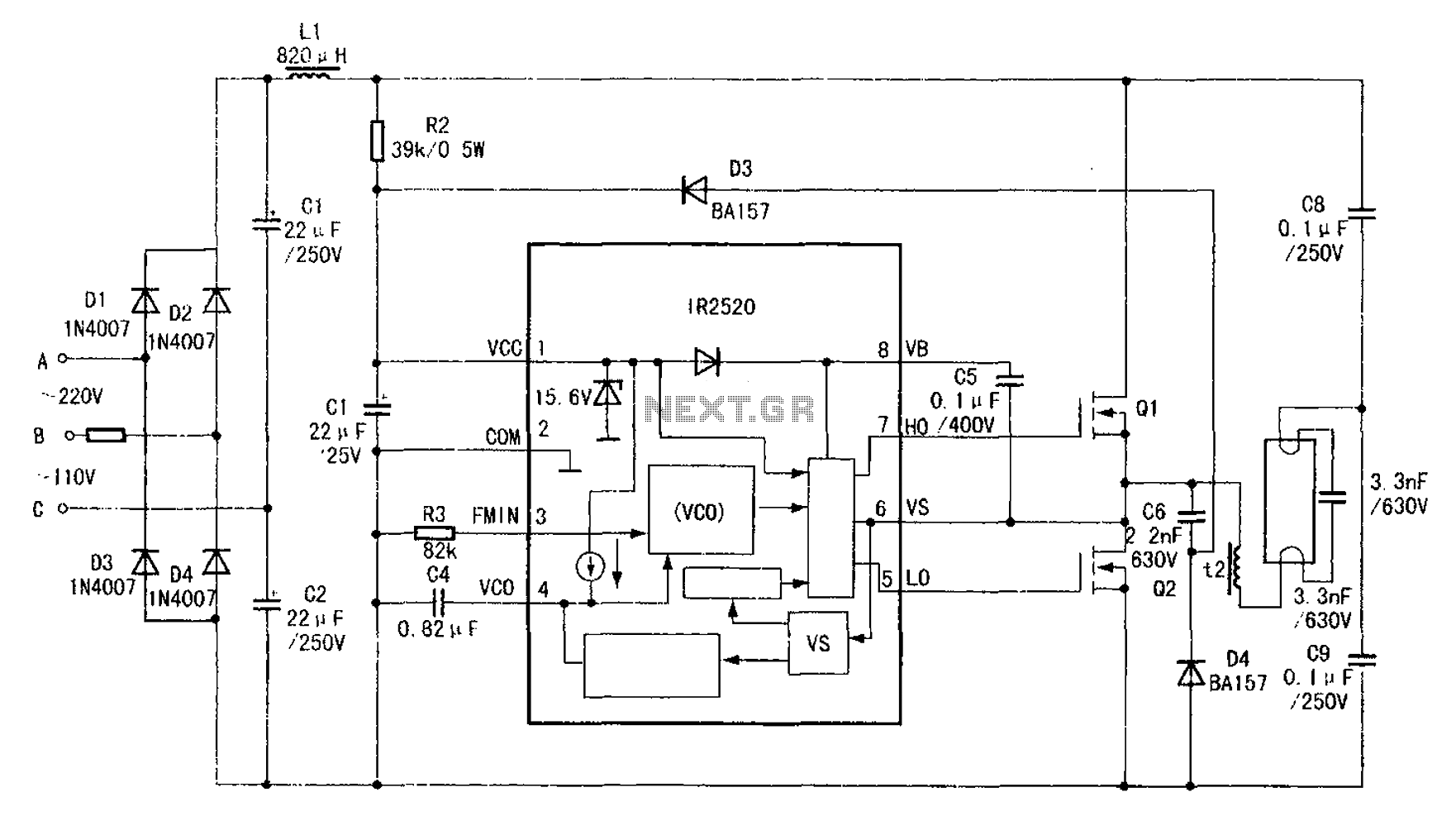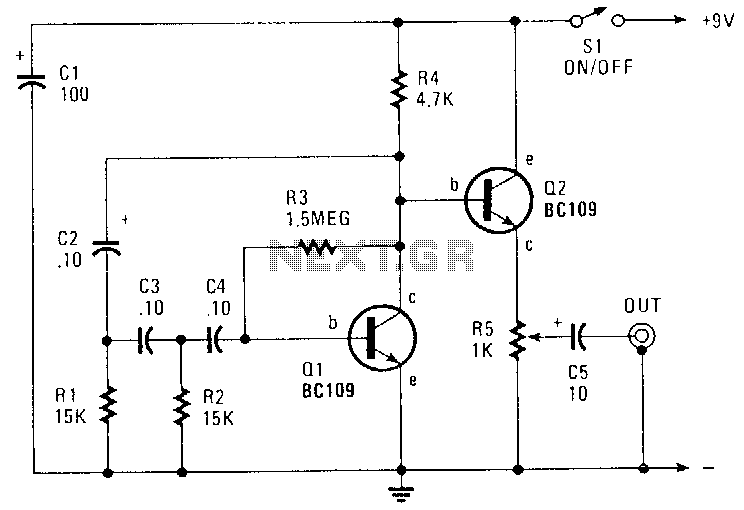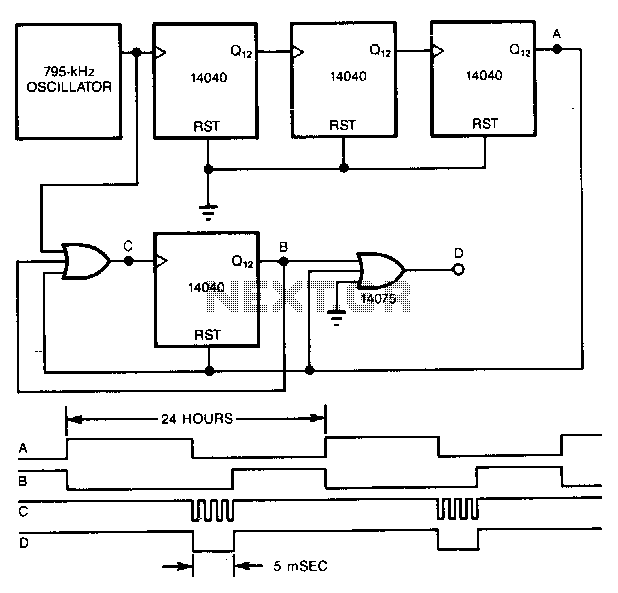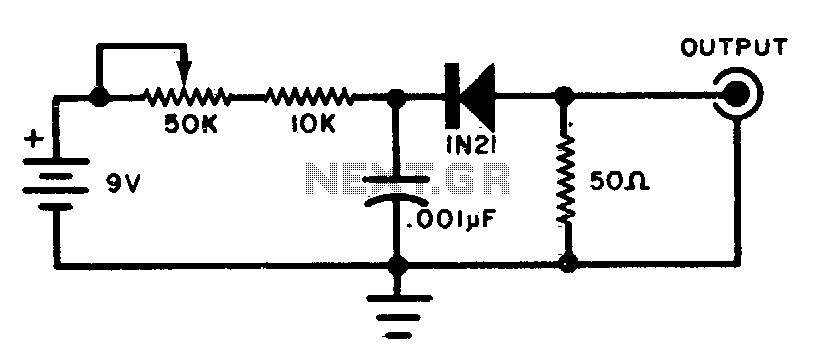
Bells Ring Generator Electronic
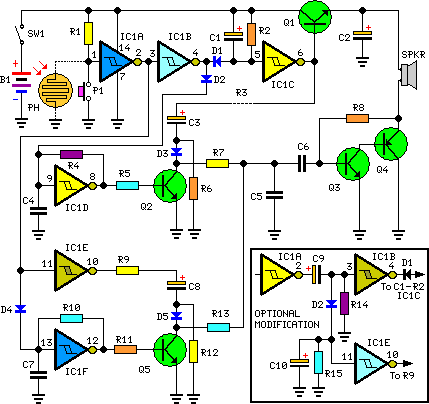
The following circuit presents a Bell Ring Generator Electronic Circuit Diagram. Features include the generation of a dual-tone bell ringing, similar to most standard bell systems.
The Bell Ring Generator circuit is designed to produce a dual-tone output that mimics the sound of traditional bells. This type of circuit is commonly used in applications such as doorbells, alarm systems, and notification devices. The primary components typically involved in this circuit include oscillators, resistors, capacitors, and a speaker or bell.
The circuit often utilizes two oscillators, which can be implemented using integrated circuits (ICs) such as the 555 timer or dedicated tone generator ICs. These oscillators are configured to operate at different frequencies, creating the dual-tone effect. The output from each oscillator is then fed into a mixing stage, where the signals combine to produce the desired sound.
Resistors and capacitors are used to set the frequency and duration of the tones. By adjusting these components, the pitch and rhythm of the bell sound can be fine-tuned. Additionally, a transistor may be employed to drive the speaker or bell, ensuring that the sound produced is loud enough to be heard clearly.
Power supply considerations are also crucial. The circuit can be powered by a standard AC or DC source, depending on the application. Proper filtering and regulation may be necessary to ensure stable operation and to prevent noise from affecting the sound quality.
Overall, the Bell Ring Generator circuit is a versatile and useful design that can be adapted to various applications, providing an audible alert or notification in a pleasant and recognizable manner.The following circuit shows about Bells Ring Generator Electronic Circuit Diagram. Features: generates a dual-tone bells ringing similar to most .. 🔗 External reference
The Bell Ring Generator circuit is designed to produce a dual-tone output that mimics the sound of traditional bells. This type of circuit is commonly used in applications such as doorbells, alarm systems, and notification devices. The primary components typically involved in this circuit include oscillators, resistors, capacitors, and a speaker or bell.
The circuit often utilizes two oscillators, which can be implemented using integrated circuits (ICs) such as the 555 timer or dedicated tone generator ICs. These oscillators are configured to operate at different frequencies, creating the dual-tone effect. The output from each oscillator is then fed into a mixing stage, where the signals combine to produce the desired sound.
Resistors and capacitors are used to set the frequency and duration of the tones. By adjusting these components, the pitch and rhythm of the bell sound can be fine-tuned. Additionally, a transistor may be employed to drive the speaker or bell, ensuring that the sound produced is loud enough to be heard clearly.
Power supply considerations are also crucial. The circuit can be powered by a standard AC or DC source, depending on the application. Proper filtering and regulation may be necessary to ensure stable operation and to prevent noise from affecting the sound quality.
Overall, the Bell Ring Generator circuit is a versatile and useful design that can be adapted to various applications, providing an audible alert or notification in a pleasant and recognizable manner.The following circuit shows about Bells Ring Generator Electronic Circuit Diagram. Features: generates a dual-tone bells ringing similar to most .. 🔗 External reference
